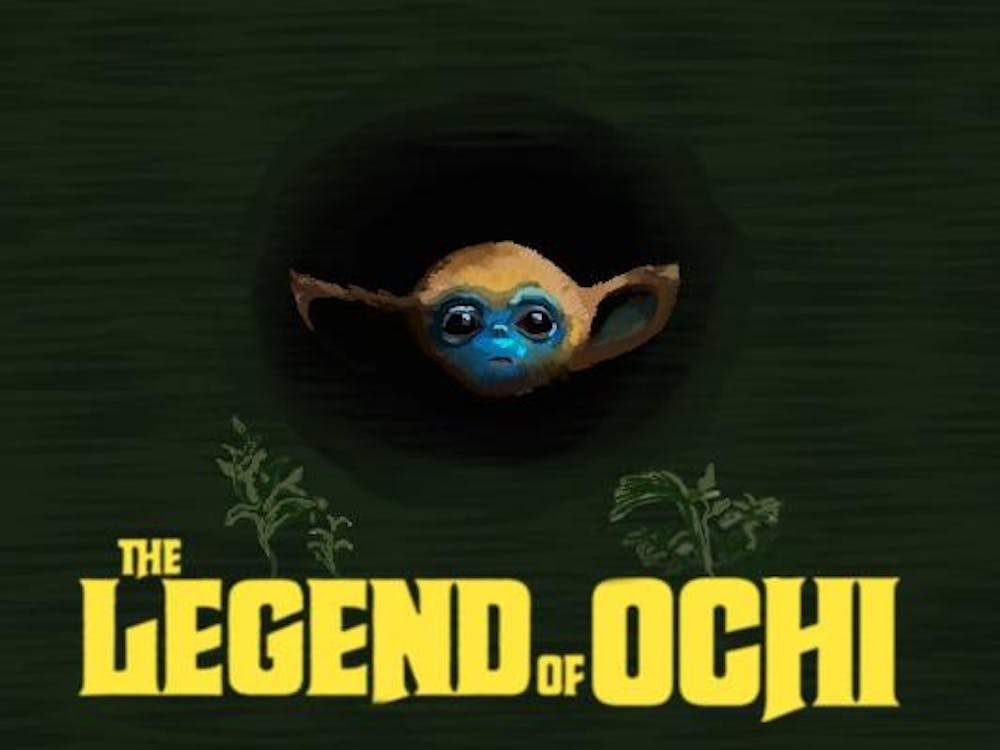The 2010s were inundated with big-budget blockbusters, with studios like Marvel churning out content on a yearly basis. Though many of these projects were well-executed, the formulaic approach and studio oversight led to these films often feeling safe or undaring. However, with his singular, unfettered vision in his newest film “Dune: Part Two,” director Denis Villeneuve has defied this benchmark of lackluster blockbusters.
After a delayed release decided amidst the WGA and SAG-AFTRA strikes, the highly-anticipated sequel to 2021’s “Dune” impresses with its breathtaking craft.
Picking up where its predecessor left off, “Dune: Part Two” follows Paul Atreides, played by Timothée Chalamet, as he and his mother, played by Rebecca Ferguson, try to survive the deserts of the planet Arrakis and regain the power they lost to Baron Harkonnen, played by Stellan Skarsgård.
As Paul continues to succeed in learning the ways of the desert, he also grapples with both fate and others’ perceptions of him, as he encounters people who insist he is the subject of a prophecy that states he will save their civilization. While these people transform Paul into a sacred, revered figure, Paul’s visions of the future show him that a deadly holy war will be started in his name. A commentary on the weaponization of religion, “Dune: Part Two” depicts Paul’s reluctance to step into the role of a messiah because he knows it will lead to violence.
Greig Fraser’s cinematography is magnificent. So many striking images shine on screen — from the silhouettes of characters fighting in front of the setting sun, to grand shots of large crowds being led through the deserts of Arrakis by Paul.
One of the most notable sequences in terms of its cinematography is a scene depicting an arena fight with Feyd-Rautha Harkonnen, played by Austin Butler. It is shot in black and white, allowing the shock value of this unflinchingly violent scene to be emphasized by its bleak and striking visual appearance.
“Dune: Part Two” is not only visually breathtaking, but also audibly gorgeous. Hans Zimmer returns to compose the score and delivers a magnificent one — with thunderous, loud music during many of the fight scenes and a sweeping and memorable melody during Paul’s first kiss with Chani, played by Zendaya.
Chalamet and Zendaya’s lead performances are both improvements upon their performances in the previous film. Paul’s struggle with his visions of a future filled with war and death in his name is greatly deepened in “Dune: Part Two,” and Chalamet effectively portrays this internal conflict. As the film goes on, Paul becomes more aware of his power and control over a large population of people. Chalamet depicts Paul’s journey to power with strong, menacing deliveries of his lines.
Zendaya, too, has much more to do in “Dune: Part Two,” and she captures Chani’s range of emotions — from skepticism and rage to love and affection — with immense skill. The entire star-studded supporting cast — which includes the return of Javier Bardem, Josh Brolin and Ferguson, alongside newcomers Florence Pugh and Christopher Walken — perfectly elevates the story by bringing life to the conflicts the main characters must face.
The standout supporting performance, however, is Butler’s portrayal of Feyd-Rautha, a sociopathic man unafraid to kill anyone in his way as he seeks more power under the Harkonnen reign. Butler completely transforms into his character. Every acting decision — from the strange way he talks to even the minor growls and snarls he unleashes at other characters — makes Feyd-Rautha truly menacing. As one of the main villains of the story, Butler is unforgettable.
The film, under all of its impressive craft and memorable acting performances, also has a riveting and thoughtful story. Though the previous “Dune” film was also well-made, its unfinished story made it feel like a set-up that never paid off. “Dune: Part Two,” on the other hand, contains a much more action-packed and satisfying story that follows Paul’s attempts to take back Arrakis.
All in all, “Dune: Part Two” is a massive film made with immense skill and care, making it impossible to miss. With such immersive images and sounds, the film is stunning on the big screen, especially an IMAX one. Villeneuve — through his dedication to the art of filmmaking — has created a spectacular, powerful film that shatters all expectations and sets a new standard for blockbusters.







